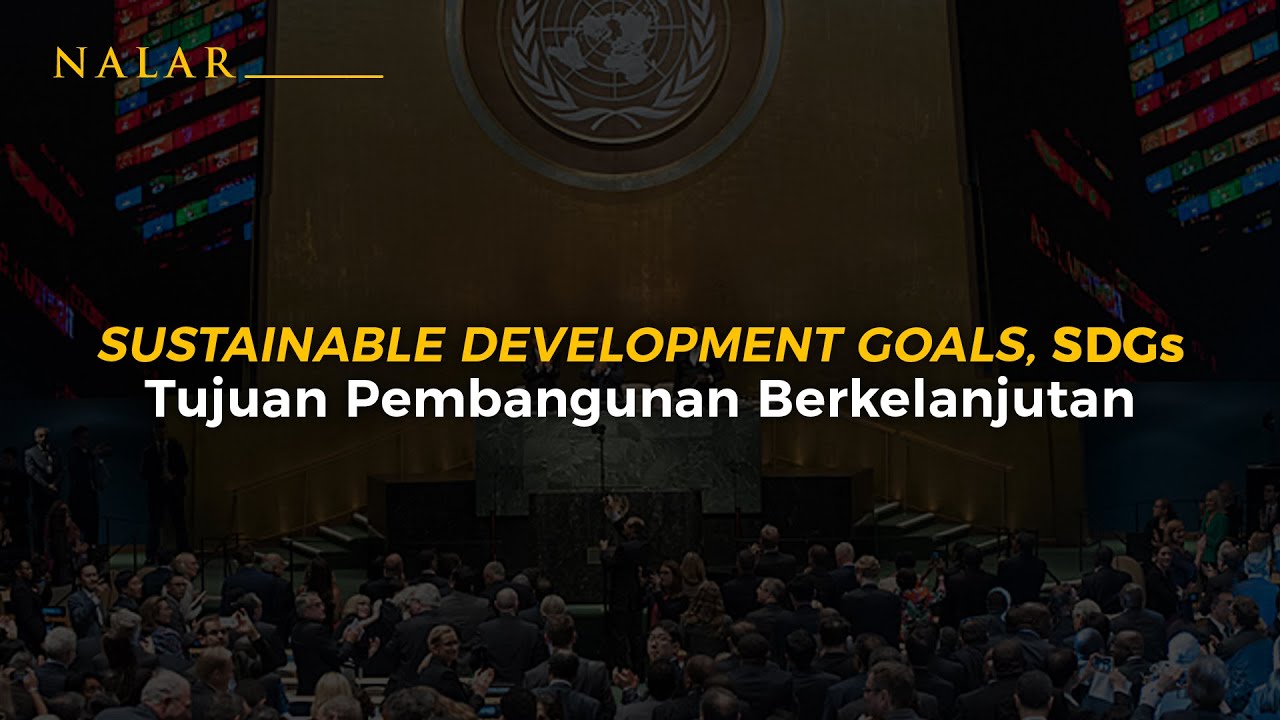Episode 4: Origin Story of Sustainable Development Goals | Origin of SDGs | SDG Plus
Summary
TLDRAs the Millennium Development Goals (MDGs) reached their end in 2015, the UN initiated two teams to develop the Sustainable Development Goals (SDGs). The SDGs, presented in 2015, consist of 17 goals and 169 targets aimed at addressing the MDGs' shortcomings with a broader, transformative agenda. The success of the SDGs hinges on continued advocacy, inclusive development approaches, and adaptability to new global challenges.
Takeaways
- 🕍 As 2015 approached, the UN sought a successor to the Millennium Development Goals (MDGs) to address their limitations.
- 🌐 In 2012, the UN established two teams during the Rio +20 conference to develop a new agenda: the UN task team and the open working group.
- 🏛️ The UN task team, led by the UK Prime Minister and presidents of Liberia and Indonesia, focused on the post-2015 agenda.
- 🌟 The open working group, managed by intergovernmental groups, was responsible for creating new development goals and targets, engaging with civil society and member countries.
- 🔄 Both teams worked in parallel for three years, culminating in the post-2015 development agenda, which included goals and targets.
- 📈 In September 2015, the UN introduced the Sustainable Development Goals (SDGs) as a blueprint for a better and sustainable future.
- 🌍 193 UN member countries committed to achieving the 17 SDGs and 169 targets by 2030, signifying a universal call to action.
- 🔗 The SDGs expanded on the MDGs by integrating social, economic, and environmental aspects, aiming for a more holistic approach.
- 🔄 The SDGs addressed the MDGs' shortcomings by including a broader, transformative agenda and engaging civil society organizations from the outset.
- 🌱 Unlike the MDGs, which were drafted by technocrats, the SDGs were developed with global input, making them more connected to worldwide development discussions.
- ❓ The success of the SDGs hinges on continued advocacy, inclusive development, local approaches, and adaptability to new global challenges like information warfare and technology-based inequality.
Q & A
Why did the UN need a successor to the Millennium Development Goals (MDGs)?
-The UN needed a successor to the MDGs because it was clear that the MDGs faced challenges that needed to be overcome, and a new agenda was required to address these issues more effectively.
What was the role of the UN task team in the development of the post-2015 agenda?
-The UN task team, chaired by the Prime Minister of the UK and the presidents of Liberia and Indonesia, was responsible for preparing the UN's post-2015 agenda.
What was the function of the open working group in the creation of the Sustainable Development Goals (SDGs)?
-The open working group was responsible for preparing new development goals and setting targets. It worked with civil society organizations, consulted all member countries, and engaged the public through various means.
How did the SDGs differ from the MDGs in terms of inclusivity?
-The SDGs differed from the MDGs by incorporating a broader and transformative agenda that was inclusive of all countries, developed or developing, and engaged civil society organizations from the beginning.
What were the main shortcomings of the MDGs that the SDGs aimed to address?
-The MDGs were largely focused on targets for developing countries with funding from developed countries, provided no specific role for civil society organizations, and were disconnected from ongoing global debates due to being drafted by technocrats without consulting global knowledge and expertise.
How many goals and targets does the SDG framework consist of?
-The SDG framework consists of 17 goals and 169 targets.
What was the significance of the SDGs being presented in September 2015?
-The presentation of the SDGs in September 2015 marked a commitment by 193 countries of the UN assembly to achieve these goals by 2030, signifying a global consensus on a sustainable development agenda.
How does the SDG framework expand upon the MDGs?
-The SDG framework expands upon the MDGs by linking the social, economic, and environmental aspects of its goals, creating a more holistic approach to development.
What are some of the ways the SDGs are expected to succeed?
-The SDGs are expected to succeed through continued advocacy for each of its targets, promoting an inclusive approach to development, and incorporating a more granular and local approach.
What challenges might the SDGs face in achieving their goals?
-The SDGs might face challenges such as countries choosing easier goals that require minimal national adaptation, leading to only a few goals receiving policy attention, effort, and resources. Additionally, new global challenges like information warfare, surveillance, populism, technology-based inequality, and immigration might require the SDGs to be more adaptable.
How does the script suggest the UN can ensure the success of the SDGs?
-The script suggests that the success of the SDGs will depend on continued advocacy, promoting an inclusive approach to development, incorporating a local approach, and the UN's ability to be flexible and adaptable to new global challenges.
Outlines

此内容仅限付费用户访问。 请升级后访问。
立即升级Mindmap

此内容仅限付费用户访问。 请升级后访问。
立即升级Keywords

此内容仅限付费用户访问。 请升级后访问。
立即升级Highlights

此内容仅限付费用户访问。 请升级后访问。
立即升级Transcripts

此内容仅限付费用户访问。 请升级后访问。
立即升级浏览更多相关视频

The United Nations Sustainable Development Summit: 17 Goals to Transform Our World

NALAR Ep. 47 APA ITU SUSTAINABLE DEVELOPMENT GOALS (TUJUAN PEMBANGUNAN BERKELANJUTAN)?

أهداف التنمية المستدامة

Transitioning from the MDGs to the SDGs

Evaluation Snapshot: Millenium Development Goals

SDG sectorial universality : all fields are covered
5.0 / 5 (0 votes)
